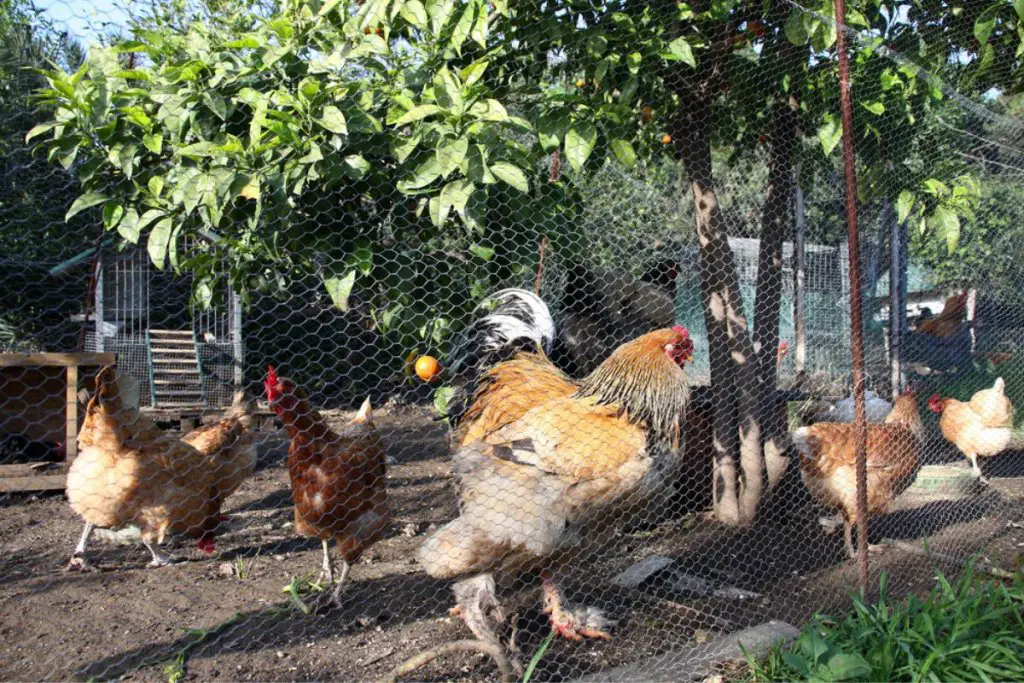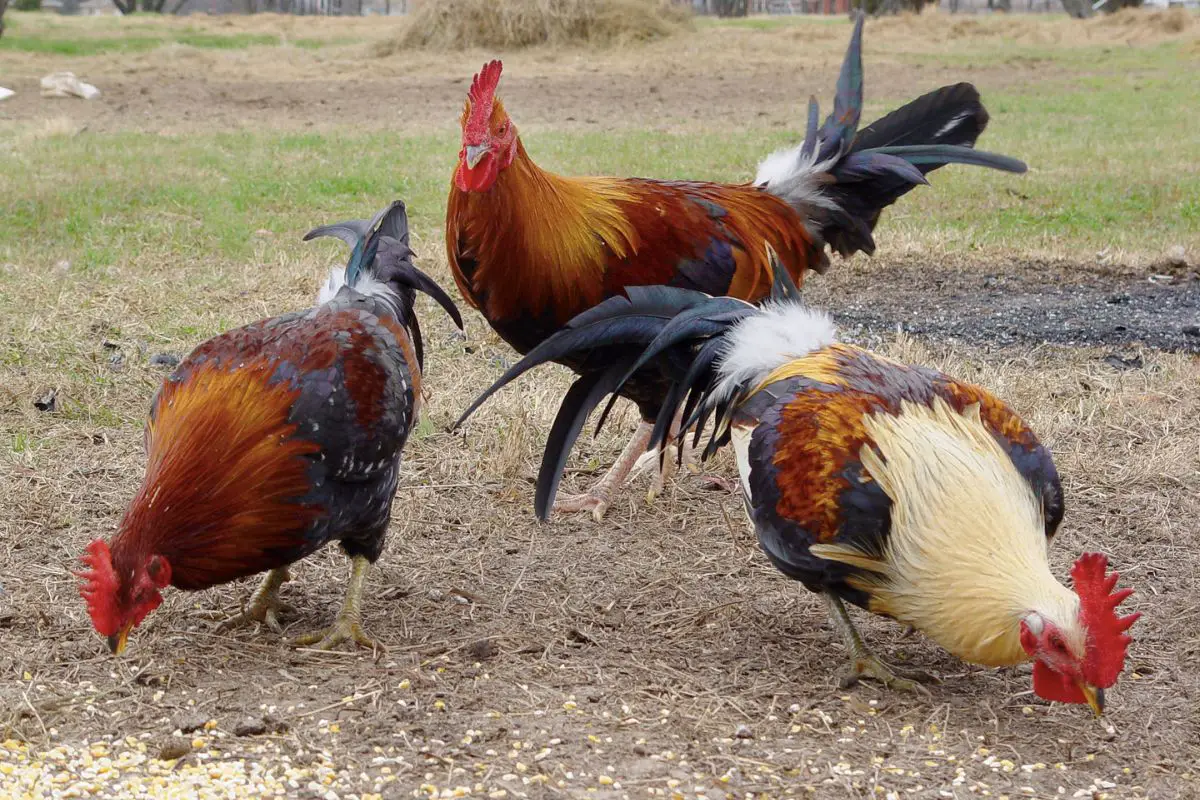You should aim to have between 4 to 12 hens for every 1 rooster in your flock. This wide variation is due to breeds having different mating and protection needs. Each rooster needs at least 4 hens to himself which avoids fighting with other roosters and wearing out hens.
Many chicken keepers have the impression that keeping a rooster in your flock is more of a nuisance than a benefit. Roosters are often seen as:
- Unnecessarily aggressive
- A health risk to hens
- Extra work to take care of
However, having a rooster in your flock has many benefits that might just outweigh some of their negative characteristics.
In this article, we will be taking a look at how many roosters are okay for the number of hens in your flock, and also why having a rooster can make for a better chicken raising experience.
Table of Contents
How Many Hens for Each Rooster?
As a general rule, you should try to have just 1 rooster for any amount of hens in an entire flock as roosters are highly territorial and will grow aggressive when surrounded by other males.

On average, your rooster should at the very least have 4 hens to mate with, otherwise, you risk your hens being overbred or your rooster being underserved. Roosters are rather physical when mating, and will jump on the hen’s back and pluck at a hen’s plumage which leads to injuries.
If you have a large flock of over 12 chickens, then you might need an additional rooster to help cover the remaining hens. There isn’t necessarily a “golden ratio” for how many hens you should have for each rooster, as there is so much variability in all chicken breeds.
| Examples | Rough Ratio | |
| Large breeds | Rhode Island Reds, Orpingtons, or Leghorns | 8 to 12 hens per rooster |
| Small breeds | Silkies and Bantam varieties | 4 to 8 hens per rooster |
Different breeds will require a different number of roosters and will depend on if you have a large or small flock.
Roosters often get along well with cockerels before they are introduced to the hens of the flock. Be careful with growing too comfortable with these behaviors, because young roosters tend to become more competitive and aggressive with one another once they’ve met the hens.
The Importance of Pecking Order
Once your rooster has met his hens, you will notice an establishing a pecking order. A pecking order is the social hierarchy within a flock that determines how all of the chickens will interact with each other.
You can think of the pecking order similarly to a human family unit structure. There will be a leader, often a rooster or head hen if no roosters are present in a flock of hens, and that leader will determine how each chicken will act and be cared for.
Oftentimes, the top chickens in the pecking order are:
- Hens that are preferred by the rooster
- Usually have priority for eating before the other chickens
- Often are the first in line for taking dust baths
- Get to pick the safest perches and spots in the chicken coop
Having a rooster who can lead the rest of the flock is also important for the flock’s survival.
Aggressive roosters will show your other birds how to act and react in certain situations, and help keep the peace if some of your hens start to fight or squabble. In general, your chickens will get along better with one another if there’s an established order, and they will function together as a unit, making their daily lives more socially rewarding and happy.
Keeping Multiple Roosters
If you have a large backyard flock that requires you to have more than one rooster, there are a few key things to consider in order for your roosters to get along.
Separated Coops
Multiple roosters often prefer a separate coop and run that is set up away from the hens. If your roosters know that they don’t have to compete with one another over hens within their coops, they will be more at ease with one another at the end of the day.
Bachelor Groups
Wild roosters are known to get along well by living ‘bachelor groups’, where they live separately from the hens for most of the day in a different coop.
Without the tensions of having to assert dominance in front of the hens, roosters will happily live together by having a completely separate bachelor pad and run with at least 8 square feet of space each.
Alpha Rooster
In the case that you do have 2 roosters, you will soon find out who is the top rooster and who is the bottom rooster:
| Alpha rooster | Will assert his dominance over the bottom, having the first pick of the favorite female chickens, food, and will in general be the leader of the flock. |
| Bottom rooster | Still has his share of hens, but will be lower down in the pecking order. |
The top and bottom rooster will determine their place in the pecking order. So, you don’t have to worry about them constantly contending for who is the alpha rooster. Once the pecking order is established between roosters, that order is usually kept despite there being an occasional fight.
The Advantages of Having a Rooster
Roosters are known to provide many benefits to your flock. After establishing a firm pecking order, a rooster will use their position as leader to keep peace and make sure that your flock stays strong.
- Roosters will be the first to alert the rest of the flock when predators appear, and will even use their physical prowess to block the predator or even try to fight it off
- Roosters are known to keep the flock grouped together as a collective, take their leadership role very seriously, and will ensure that the pecking order is being upheld
- Chickens are able to mate and produce offspring, allowing you to increase your flock size in a cost-effective manner. Fertilized eggs are just as safe for us to eat as unfertilized eggs
Keeping roosters isn’t for everyone, as they will add an entirely new dynamic to your flock, require additional expenses of housing and food, and can become aggressive at times. However, if properly integrated into a flock that has the right amount of hens, roosters can be a great asset to have around for keeping your backyard chickens safe and unified.

